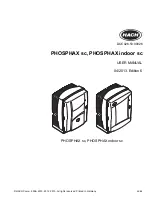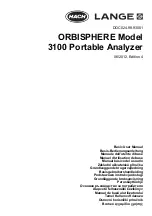
3.3
Adjustment settings
In order to maximise the comfort of the rebreather, some settings need to be adjusted in
order to fit with the morphology of the user. The possible settings are explained here below.
They are the positioning of the TRITON on the diver, the flow of the CMF valve, the sensibility
of the ADV and at least but not last: the calibration of the cells (This last test is not linked to
the diver’s morphology but is ESSENTIAL for the good operation of the rebreather)
3.3.1
Standard wearing
Because the TRITON is a front rebreather it must be used with a bail-out in standard config-
uration (on the back) to begin or in side Mount. Thus, it is necessary to adapte the harness
used to fix the TRITON.
The TRITON is delivered with four snaps hook to fix it safely on the diver. However, for a
good work of breathing (WOB), the TRITON must be correctly positioned on the user.
Figure 3.4 –
TRITON positioning
The good position for the TRITON:
When the diver is out of the water, and standing up,
the top of TRITON must be fixed one hand underneath the base of the neck but ever above
sternum.
3.3.2
The M3S valve
The TRITON is delivered with a M3S valve set up at 0.7 L/min. This is corresponding to an
average metabolic consumption of oxygen. Each human body is different, thus, it can be
necessary to adjust the M3S valve flow.
The valve’s flow is set up by the intermediate pressure of the DS4 APEX regulator. This has
to be done with special tools.
The 0.7 l/min is corresponding to 11 to 12b of DS4 intermediate pressure (with a 30
µ
"
±
5%
27












































